These Chinese scallion pancakes are crispy, flaky, aromatic and flavorful. My step by step instructions with tips and tricks that I picked up from my 10+ years of experience will help you recreate these amazing scallion pancakes at home.
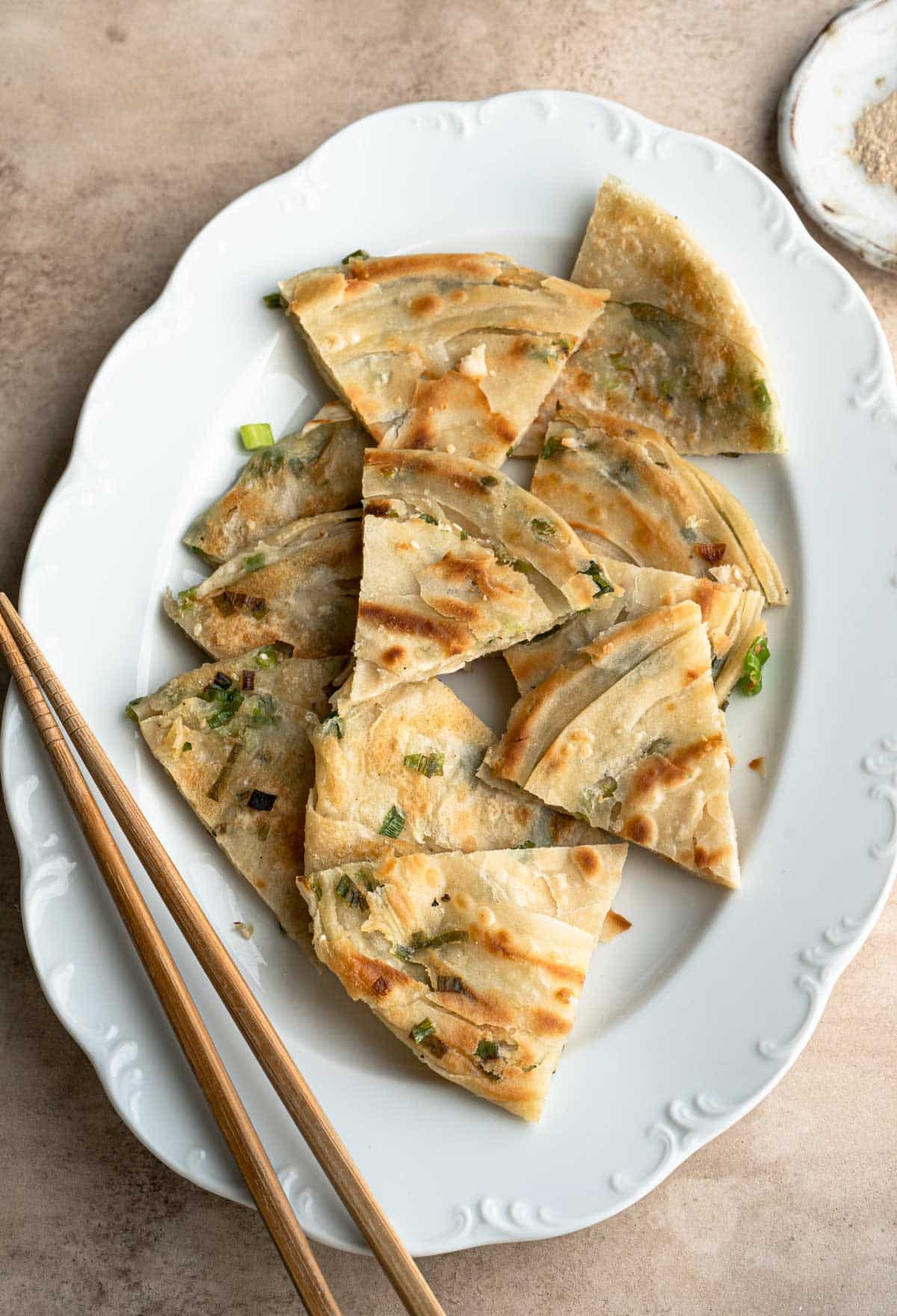
It would not be an exaggeration to say that the scallion pancake is one of the most popular and ubiquitous dishes in Taiwan. It's so popular there that we would eat it for breakfast, lunch, dinner or just as a snack. You can easily find it at restaurants, street vendors or in the frozen aisle of grocery stores.
I am very picky with my scallion pancakes. To me, the ideal scallion pancake should be flavorful, crispy, flaky, soft within, and yet delivering a good bite with its many layers.
After over 10 years of experience with making scallion pancakes, experimenting with many different methods, I can finally make scallion pancakes that are even better than some of the ones I got from street vendors in Taiwan.
Why You Should Try This Recipe
- Clear and easy to follow instructions along with pictures at each step of the process will give you the best chance to succeed at making your own delicious scallion pancakes!
- You only need a few simple ingredients to make this recipe and don't need any machine.
- You will receive useful tips and tricks for making delicious scallion pancakes that I learned from my 10+ years of scallion pancake making experience.
- While frozen scallion pancakes may be more convenient, these will taste much better!
Ingredients You'll Need
Here are the main ingredients you'll need for making this recipe. Check the recipe box below for the full ingredient list with actual measurement.
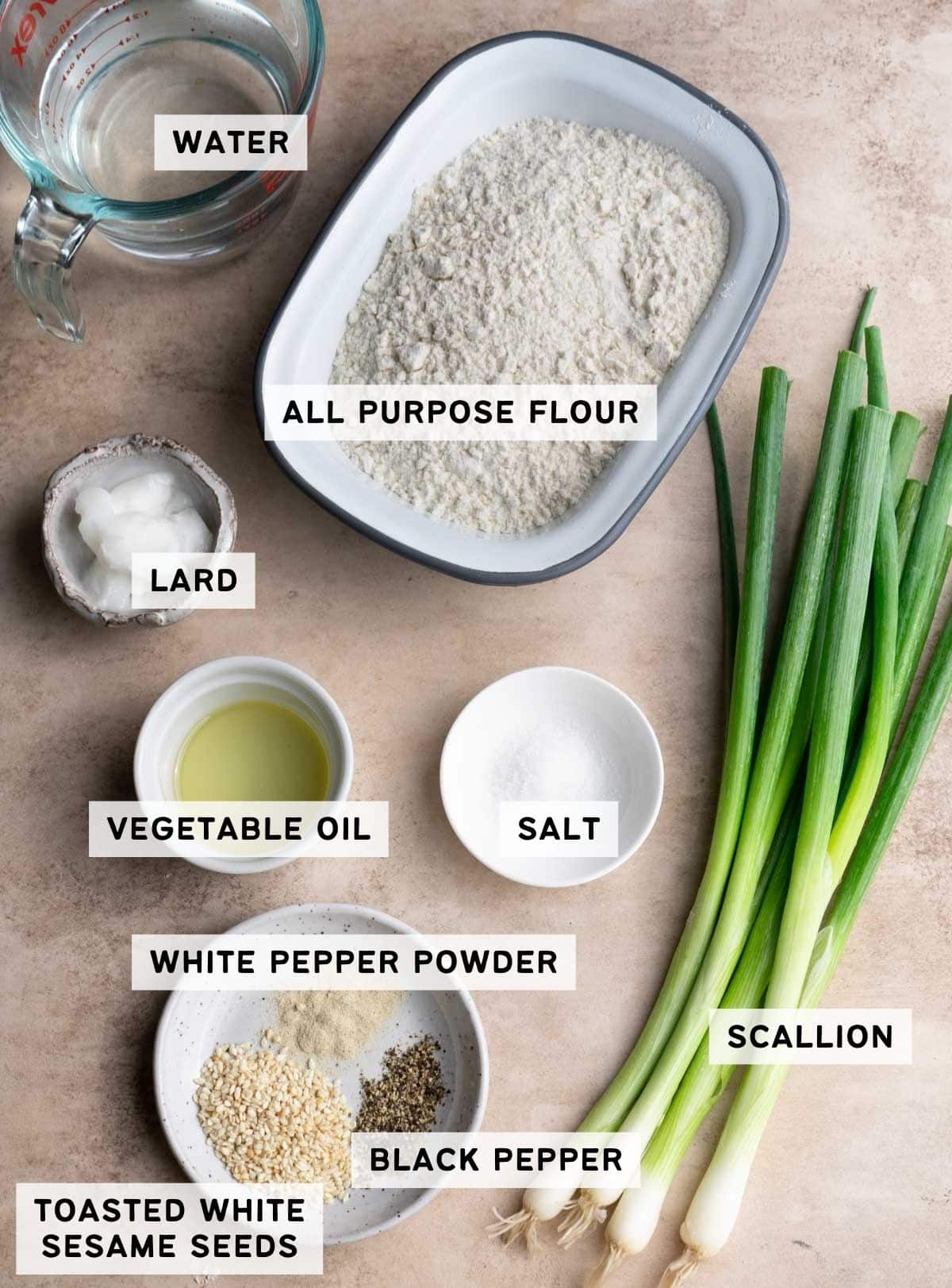
Note
- Lard - This not only gives the scallion pancakes a flakier texture but also provide a unique aroma and flavor that you won't be able to get from using vegetable oil. You can either render it yourself (see tips and tricks below) or use store bought lard. However, if you are vegetarian or just don't want to use lard, you can replace this with sesame oil or just regular cooking oil.
Step by Step Instructions
Step 1 - Make the dough
Pour hot water In a mixing bowl with all purpose flour, stir and mix with chopsticks until it becomes clumpy. After the dough cools slightly, knead the dough by hand for 2-3 minutes until the mixing bowl and your hands become relatively clean. Add more cold water if needed.
Put the dough in a Ziploc bag or wrap it in a piece of plastic wrap and let it rest for 30 minutes to 2 hours. Don't worry if the outside of the dough looks rough like the moon's surface, after resting it will all become smooth.
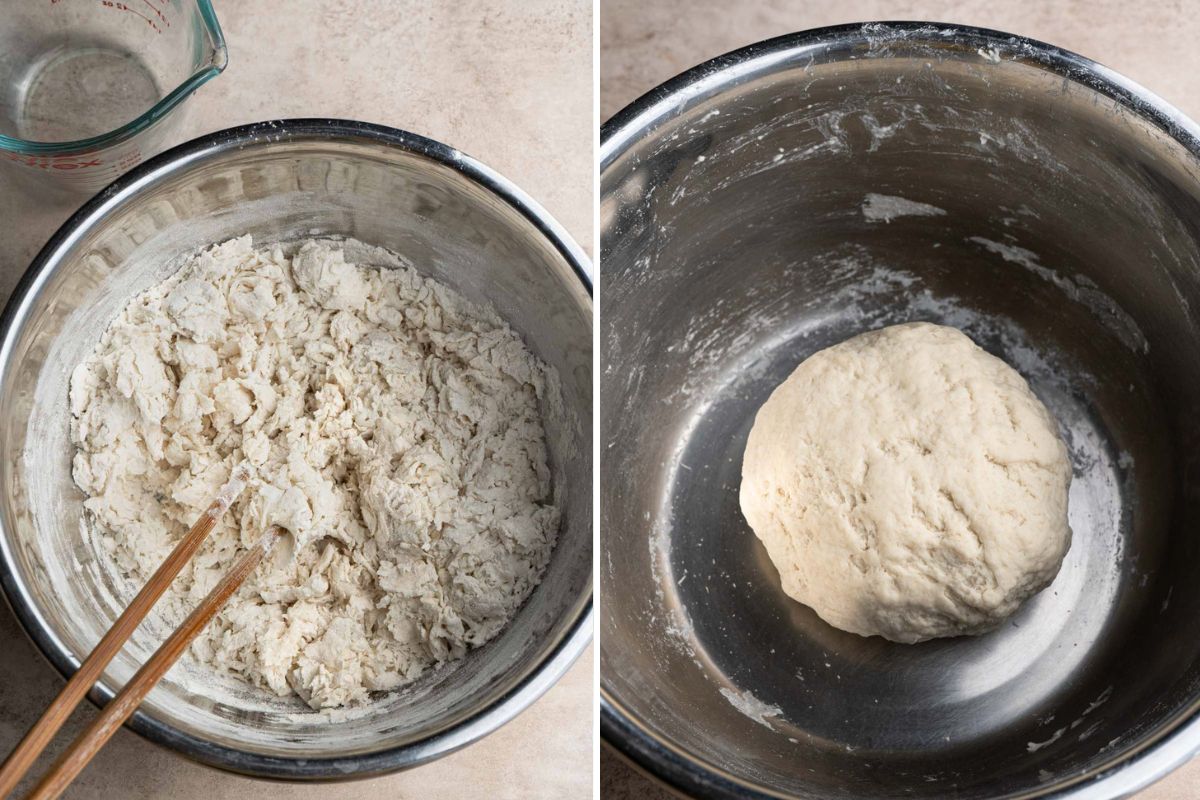
Step 2 - Make Oil Paste
Mix lard, vegetable oil, salt and flour in a small bowl and set it aside.
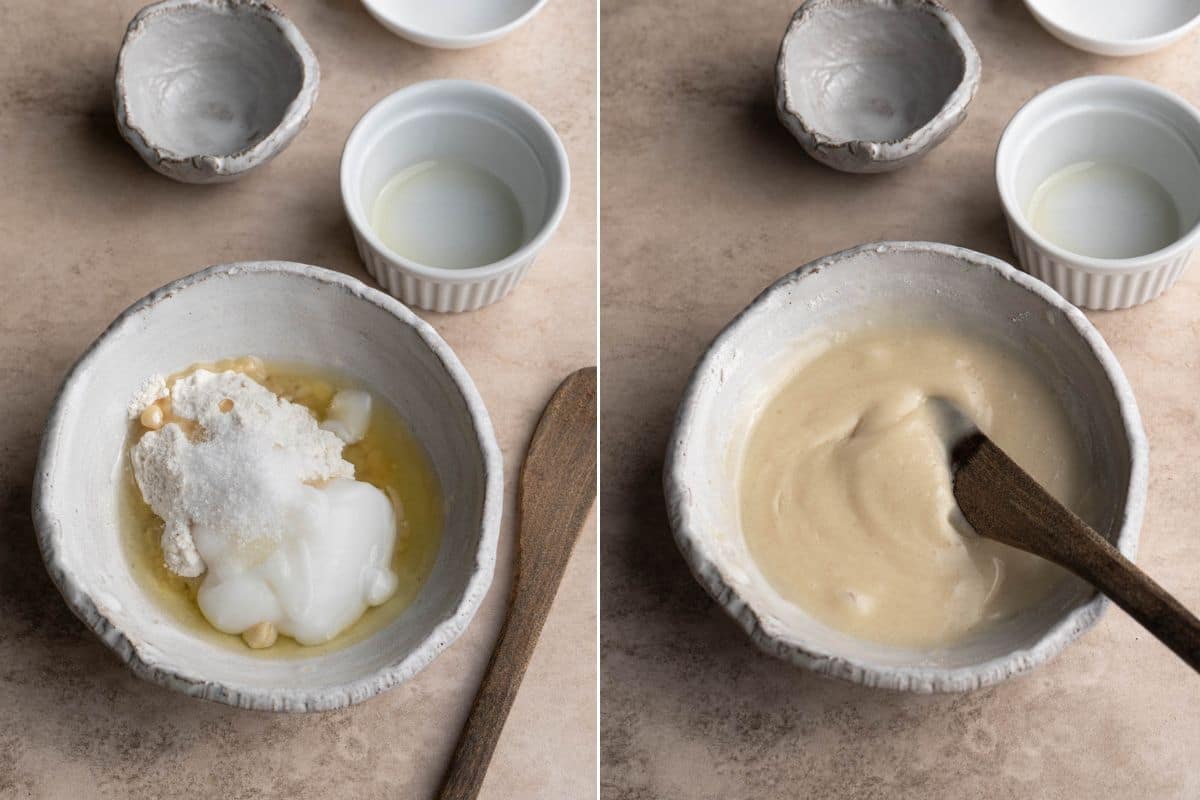
Step 3 - Assemble Scallion Pancake.
After the dough is done resting, divide it into 4 equal pieces. Tuck the edges into the bottom, apply some oil on the surface, cover and let it rest for another 10 minutes.
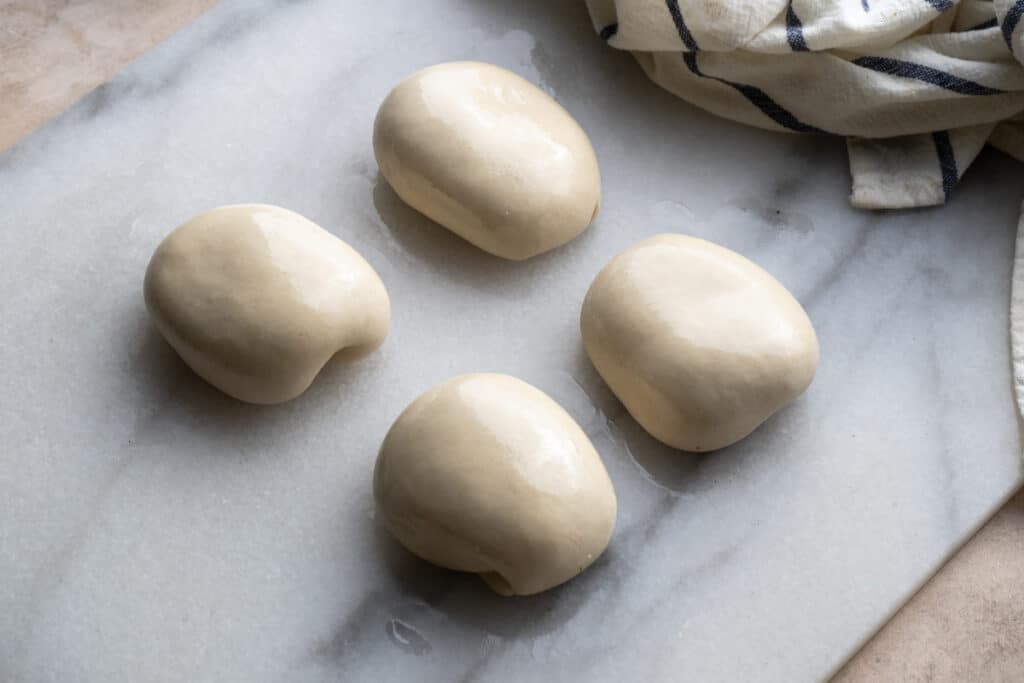
Work on the dough one at a time while keeping the others covered. Roll the dough into a long rectangular shape, with around ⅛ inch thickness.
Apply a thin and even layer of oil paste on the surface and put scallions on top of it. Add desired optional toppings.
Roll the dough from the bottom all the way up while squeezing out the air inside. Using the resulting log of dough, form two spirals from the two ends of the log, with one spiral being smaller than the other (see pictures below for reference).
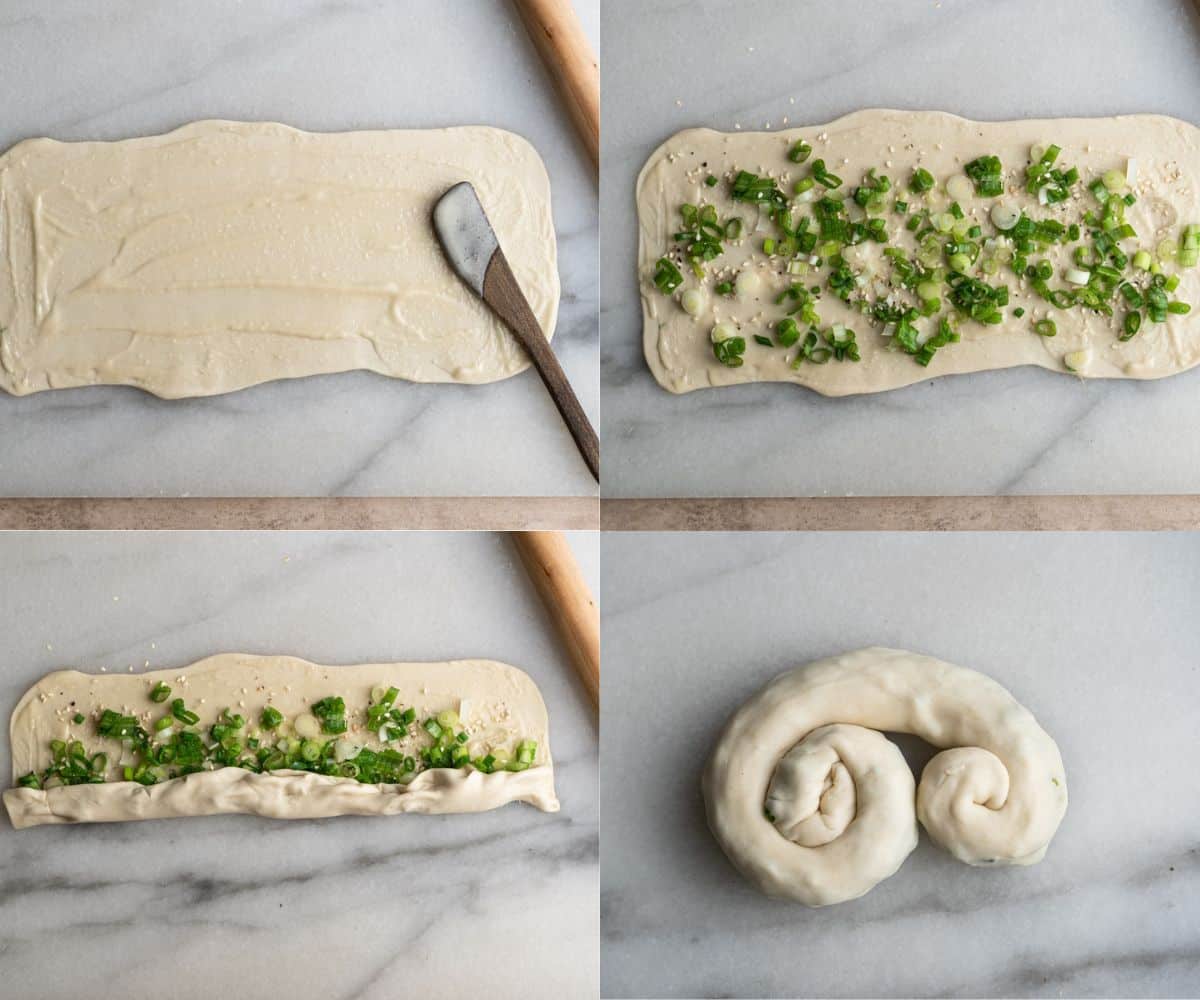
Tuck the small spiral under the larger one and press the large spiral down over the smaller one. Repeat for the 3 other lumps of dough. Cover resulting buns with plastic wrap and let them rest for around 30 minutes (could be stored overnight in the fridge for using the next day).
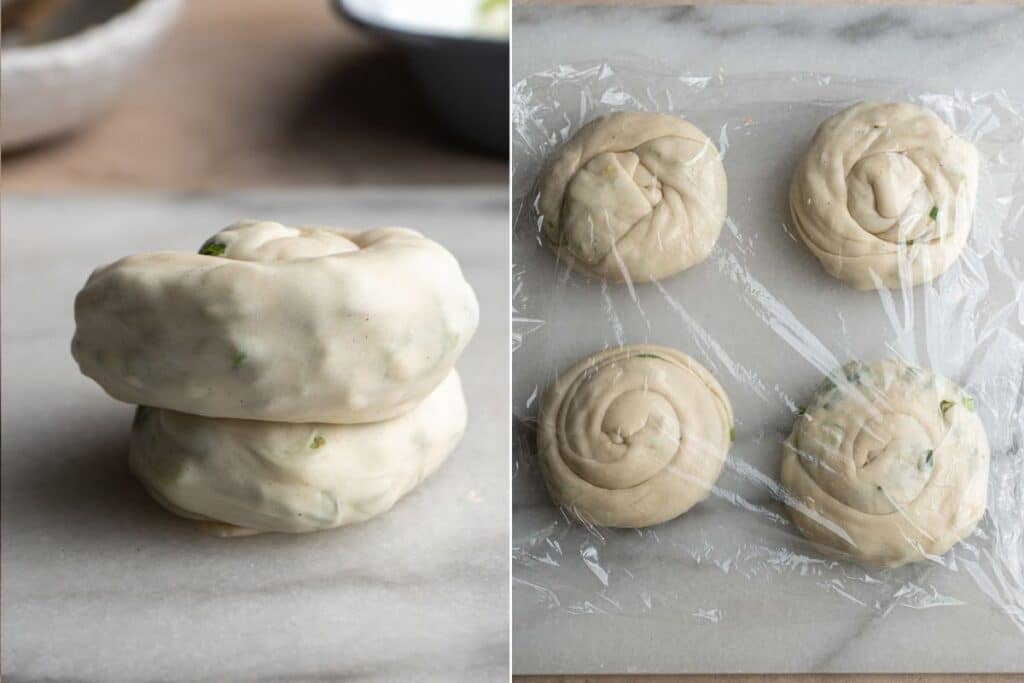
Step 4 - Cooking scallion pancake
Roll the spiral lumps of dough out on an oiled surface into 7 inch pancakes.
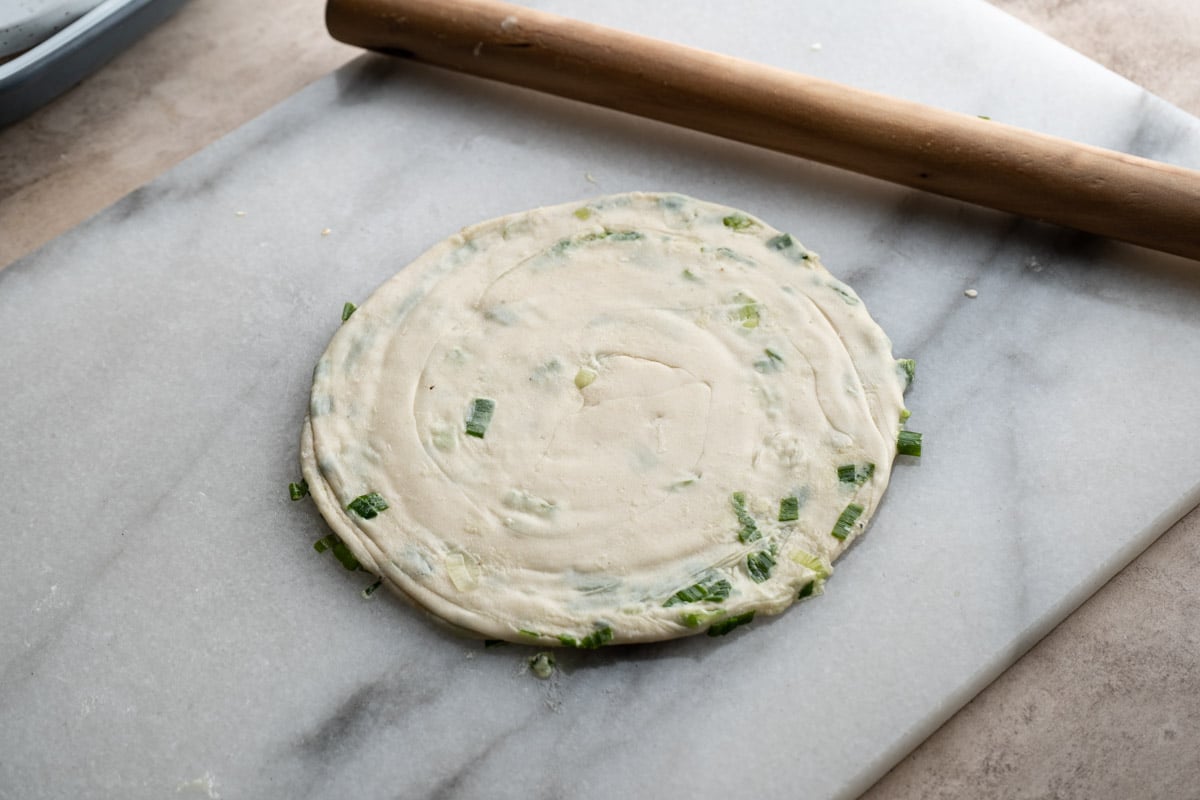
Heat 2 tablespoons of oil in a skillet over medium heat before pan frying the pancake for one minute on each side. Continue flipping and cooking until evenly golden brown. Add more oil when needed as each pancake is being cooked.
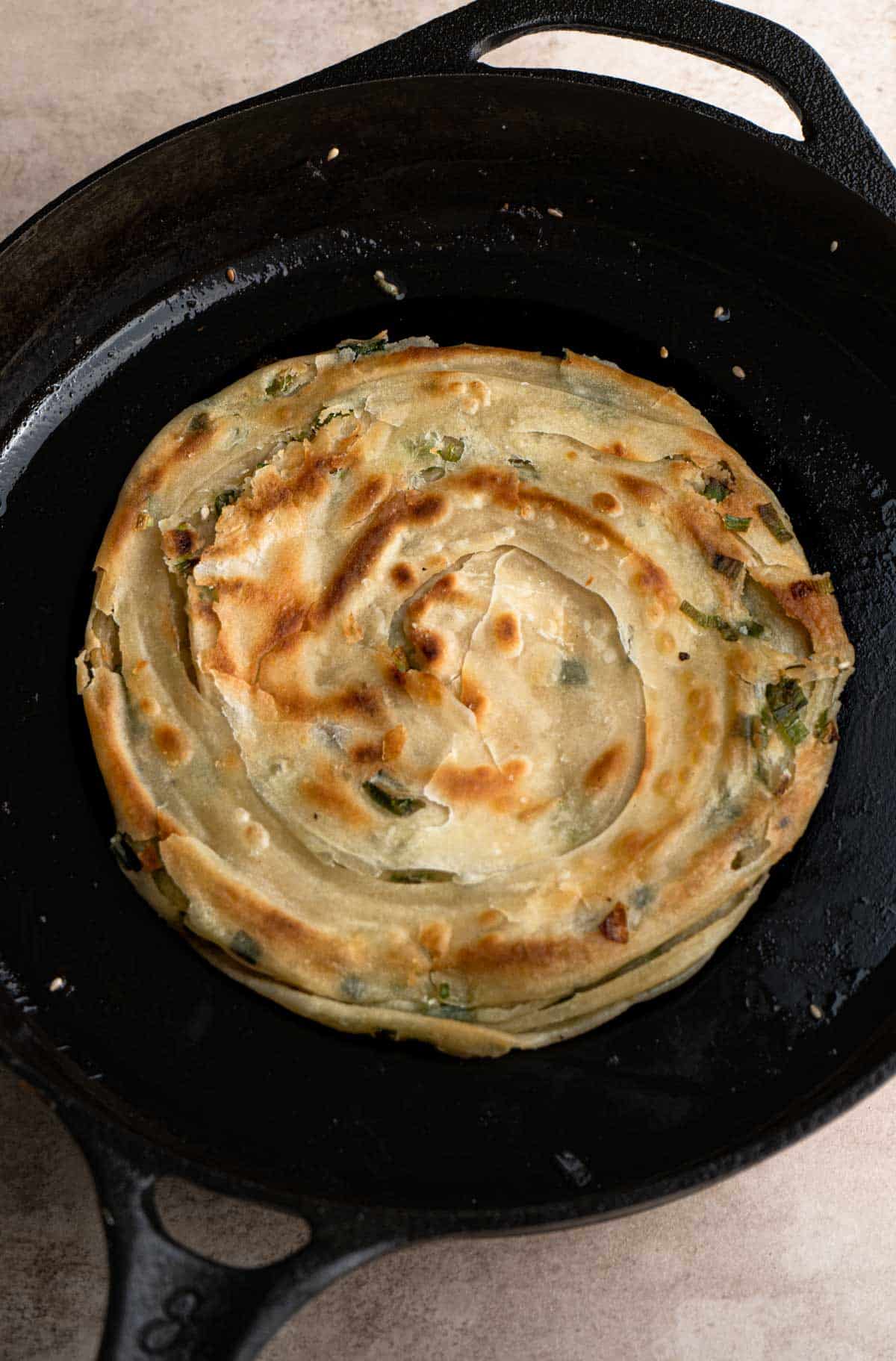
Finally, here's a trick my grandma taught me (she said she learned from a street vendor) -- after the pancake is almost finished, use two spatulas or tongs to scrunch the pancakes from two sides 2 to 3 times to "fluff it up" and accentuate the layers right before serving.
Of course, the most important part is to enjoy your pancake as soon as possible! They taste the best immediately after they come out of the pan. After it cools, no matter how you reheat it, it will never quite be the same again.
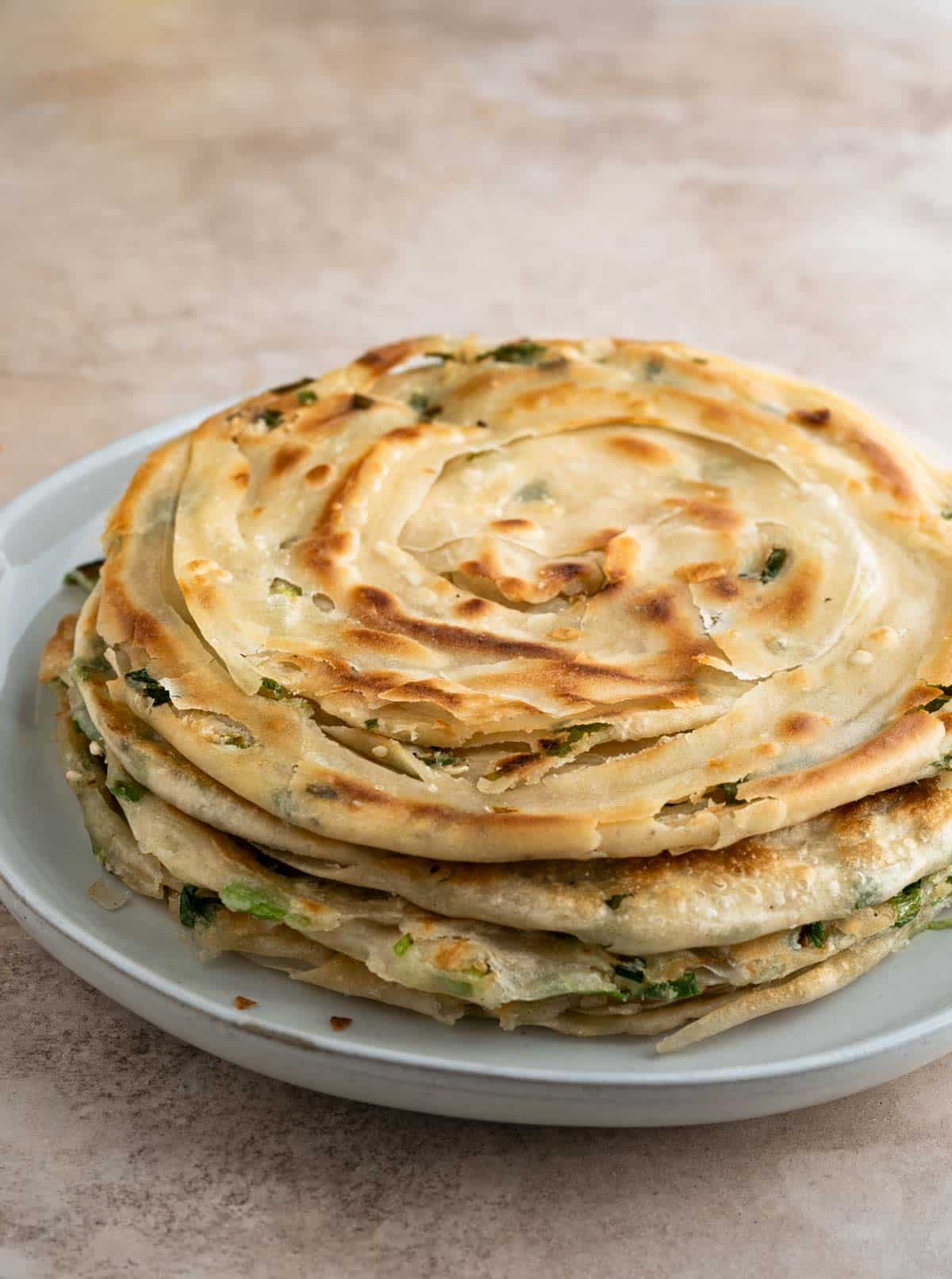
Serving Suggestions
I like to either eat these by themselves or top with a bit of pepper salt (椒鹽粉), you can also eat them with some hot sauce or sweet soy sauce if you like.
Another option for your scallion pancake is to cook a fried egg onto it. To do so, heat some cooking oil and crack an egg in the pan. Next, cover the egg with the pancake before pressing them together to combine them.
Cook your scallion pancake with egg to the degree of doneness you like. I put on some sriracha with white pepper powder and a little bit of salt and fold it in half before taking a bite, and the results are amazing! With a cup of soy milk or milk tea, you can enjoy a traditional Taiwanese breakfast at home!
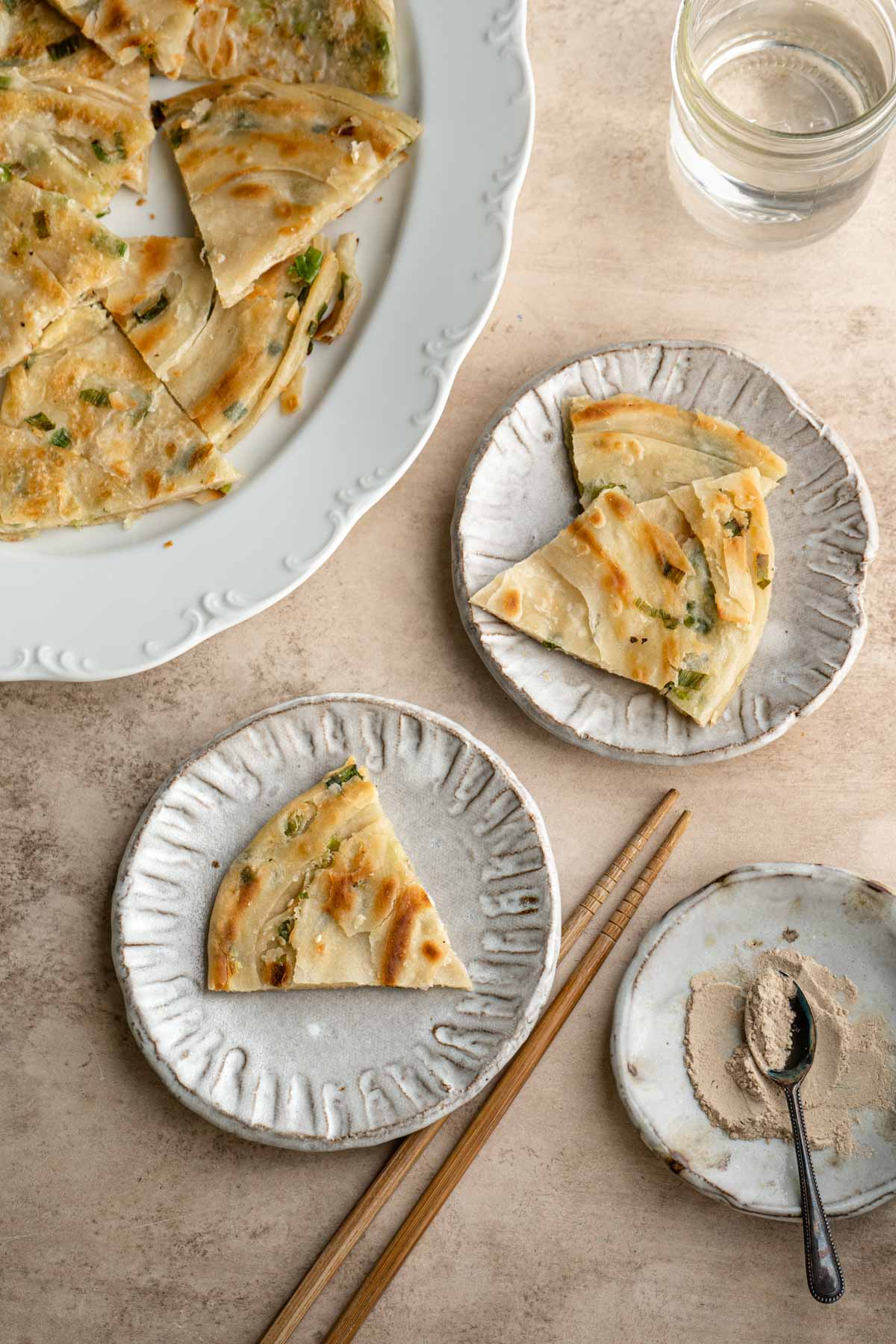
Recipe Tips and Tricks
- Making the dough with hot water allows the flour to absorb more water, which gives your pancake a softer and chewier interior (better contrast with the crispy exterior) after it's pan fried.
- Resting the assembled scallion pancakes before rolling them out gives their flavor more time to develop flavor while preventing the dough from breaking.
- If you want to make more and freeze them, separate each rolled out raw pancake with parchment paper before putting them in a freezer storage bag. You can store them in the freezer for up to a month. Follow the cooking directions above and cook directly without thawing.
Recipe FAQs
If you want to make whole wheat scallion pancake, replace ⅓ cup of all purpose flour with whole wheat flour. You will probably need more cold water to form the the dough.
I don't have much experience working with gluten free flour so I'm not sure.
Yes! One of my readers tried it and it turned out well, just be prepared for your scallion pancake to have a smokey flavor.
Yes, after you assemble and roll out the pancake, you can cover and store the scallion pancake in the fridge overnight to cook the next day. You can also roll it out first and store in the freezer for a month (see recipe tips and tricks section for more information).
Related Recipe
I would like to hear from you! If you make this recipe, please consider leaving a star rating and comment in the section further down the page. Stay in touch by following my Instagram and Pinterest!
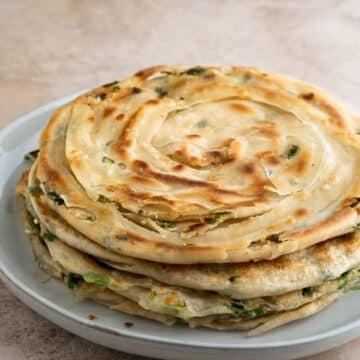
Crispy and Flaky Chinese Scallion Pancake (蔥油餅)
Ingredients
- 3-4 stalks of scallions
Dough
- 2 cups all purpose flour, 250g
- ½ cup hot water (around 195°F, 90°C), 125g
- cold water
Oil Paste (will have extra)
- ¼ cup all purpose flour, 30g
- 1½ tbsps lard, can be replaced by sesame oil or cooking oil
- 1½ tbsps cooking oil
- 1 teaspoon sea salt
Optional Toppings
- black pepper
- white pepper
- toasted sesame seeds
Instructions
Prepare Scallions
- Wash and thinly slice scallions, let them dry on the chopping board until ready to use. If your scallion is on the thicker side, cut the white portion of the scallion stalks lengthwise before slicing.
Make the dough
- Pour hot water In a mixing bowl with all purpose flour, stir and mix with chopsticks until it becomes clumpy. After the dough cools slightly, knead the dough by hand for 2-3 minutes until a dough ball is formed and the mixing bowl and your hands become relatively clean. Add more cold water if needed.
- Put the dough in a lightly oiled Ziploc bag or wrap it with plastic wrap to rest for 30 minutes to 2 hours.
Make oil paste
- Meanwhile, mix the oil paste ingredients in a small bowl until well combined. The consistency will depend on the type of fat you use and the temperature; it can be runny.
Assembling Scallion Pancakes
- After the dough is done resting, divide it into 4 equal pieces. Tuck the edges into the bottom, apply some oil on the surface, cover and let it rest for another 10 minutes.
- Work on the dough one at a time while keeping the others covered. Roll the dough into a long rectangular shape, with around ⅛ inch thickness.
- Apply a thin and even layer of oil paste on the surface and put scallions on top of it. Add desired optional toppings.
- Roll the dough from the bottom all the way up while squeezing out the air inside. Using the resulting log of dough, form two spirals from the two ends of the log, with one spiral being smaller than the other. (see pictures in the post for reference)
- Tuck the small spiral under the big one and press the big spiral down over the small one. Repeat for the 3 other lumps of dough. Cover resulting buns with plastic wrap and let rest for around 30 minutes (could be stored overnight in the fridge for using the next day).
Cooking Scallion Pancakes
- Roll the spiral lumps of dough out on an oiled surface into a 7 inch pancakes.
- Heat 2 tablespoon oil in a skillet over medium heat before pan frying the pancake for one minute on each side. Continue flipping and cooking until evenly golden brown. Add more oil when needed as each pancake is being cooked.
- Finally, after the pancake is almost finished, use two spatulas or tongs to scrunch the pancakes from two sides 2 to 3 times to "fluff it up" and accentuate the layers right before serving.
Notes
- Resting the assembled scallion pancakes before rolling out gives them time to develop the flavor while prevents the dough from breaking.
- When pan frying scallion pancakes, the first one usually takes a bit longer to cook since your pan is not hot enough. It will starts to cook faster from the second one, so make sure you watch and adjust the heat accordingly.
- If you want to make more and freeze them, separate each roll out raw pancake with parchment paper, put in a freezer storage bag and store in the freezer for up to a month. Follow the cooking direction and cook directly without thawing.
- Lard is the key ingredient making a flavorful scallion pancake, and it's very easy to make at home, you can either save the oil from pan-frying pork belly or grind the pork fat and steam it for 30 minutes (with cover so water won't get in); however, if you are vegetarian or just don't want to use lard, you can replace it with sesame oil or just regular cooking oil.


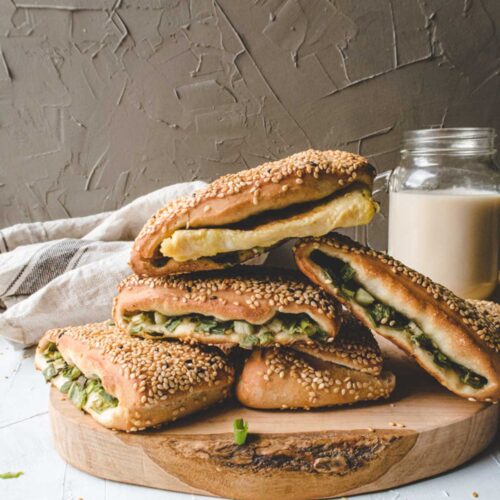
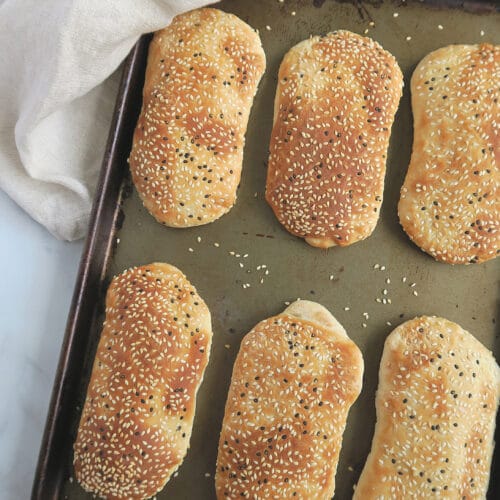
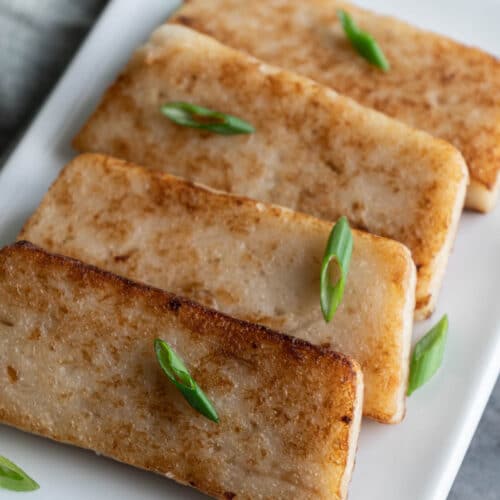
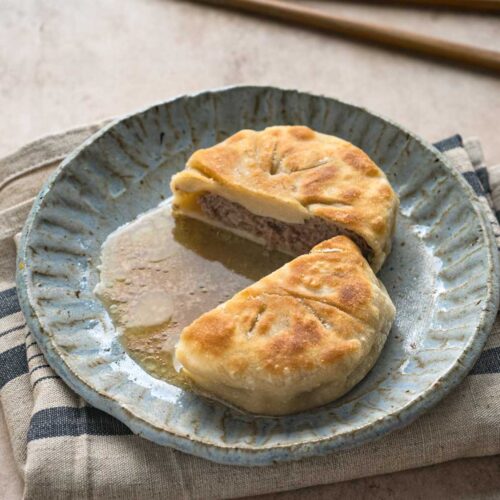
Thank you, I've been looking for a doable [yes, that's a word :)] recipe of this. I ate this in Cing Jing, Taiwan, in the cold weather and I still remember the taste on my palette.
I'll try it out in this lockdown and relive my memory from Bangalore, India.
Can you tell me how it's pronounced in Chinese?
Kunj
Hi Kunj,
Please give this recipe a try, it's very easy and the result is amazing! It's pronounced like "tsong(1)-yo(2)-bing(3)" in Chinese. 🙂
Hi! For the flour, are the 2 cups before sifting or after sifting?
And for the paste, if you are going to use lard, why is oil needed on top of that?
Thanks!
Hi Carrie, you don't need to sift the flour, just add it directly. I use half lard and half vegetable oil to make the paste because I didn't want to use so much lard, but you can use all lard if you would like 🙂
Thanks for this recipe, I've been craving this!! I'm going to try to make it this weekend and was wondering if it would be okay/weird to use butter instead of lard?
Hi Amy, I haven't tried using butter but I think it will work. Let me know how it turn out if you end up trying it. I'm curious 😀
Thank you, it looks delicious! Do you have approximations for the ingredients in grams? I tried your shaobing recipe and it turned out great!
Hi Peggy, sorry I don't those numbers at this point, I developed this recipe with cups because it doesn't need to be very accurate like some of my other recipes. I'm glad the shaobing recipe worked out for you, I believe this one should as well even without measurements in grams.
Delicious! I didn't have any lard on hand, but I substituted butter and it turned out nicely. Thanks for sharing--I'll definitely be back to try more recipes.
That's good to know! Thanks for the tip 🙂
I just made this
except I burned the first batch
I live on Oahu where a good green onion pancake is difficult to find- i believe only 3 restaurants on the island serves it-
this was tasty and a good recipe especially since my cooking could be hit or miss- i was able to follow thos recipe and allot time for all the “resting” so make sure you read the whole recipe first - i also sprinkled additional salt inside
Hi Pauline, that's awesome! Thank you so much for trying the recipe, now you can make it whenever you want 🙂
I've been seeing these on Night Market videos on YouTube. I NEVER thought I'd EVER be eating them in my home. lol THANK YOU for taking the time to share the recipe with us, they are DELICIOUS!
I didn't have lard but I did have bacon grease...perfect substitution.
Thank you so much Jennifer!! I love how we can make almost everything we want to try at home by following the recipes online. I'm so happy to hear you enjoy the scallion pancakes! And bacon grease does sounds like a perfect substitution! 🙂
Came out great! I used some scallion infused oil from another recipe, along with the lard. Definitely the best I've ever made!
That sounds amazing!! You made me crave for some scallion pancakes now 😀